 6 boneless skinless chx thighs
6 boneless skinless chx thighs
Marinade in sage white pepper and evo. Broil 6 minutes per side, set aside
2 onions, 2 cans white beans chx broth. Simmer to reduce broth. Add one can coconut milk. Simmer. Top with fresh spinach. Simmer till wilted.
 6 boneless skinless chx thighs
6 boneless skinless chx thighs
Marinade in sage white pepper and evo. Broil 6 minutes per side, set aside
2 onions, 2 cans white beans chx broth. Simmer to reduce broth. Add one can coconut milk. Simmer. Top with fresh spinach. Simmer till wilted.
Last day for Flash Illustration Portfolio Image!
We will be showcasing these images in class tomorrow. Have your work ready to present.
50 Soups
Stay warm all season with dozens of soups from Food Network Magazine.
CATEGORIES: Soup, Fall
Spicy Tortilla Soup (No. 11). View More Photos
1. Basic Chicken Chop 1 onion, 1 celery stalk, 2 carrots and 1 tablespoon thyme; sauté in butter until tender. Season with salt and pepper. Add 6 cups chicken broth; simmer 20 minutes. Add 2 cups shredded cooked chicken, 1/3 cup mixed chopped dill and parsley, and some lemon juice.
2. Chicken Rice Make Basic Chicken Soup (No. 1); omit dill and add chives, chervil and tarragon. Stir in 1/3 cup cooked basmati rice.
3. Italian Wedding Make Basic Chicken Soup (No. 1) with a rind of Parmesan in the broth. Add 1 pound mini meatballs, 1 cup orzo and 3 cups torn escarole; simmer until the orzo is tender.
4. Chicken Dumpling Mix 2 tablespoons softened butter, 1 beaten egg, 1/2 cup farina cereal and 1/2 teaspoon salt. Drop half-teaspoonfuls into simmering chicken broth; cook for 3 minutes after the dumplings float.
5. Escarole and White Bean Cook 3 chopped garlic cloves and some red pepper flakes in olive oil. Add 3 cups chicken broth, 1 head chopped escarole and a Parmesan rind; simmer 15 minutes. Add 1 can white beans, Parmesan and salt.
6. Butternut Squash Sauté 1/2 sliced onion with a pinch of thyme in butter until soft. Add salt, pepper, 2 pounds diced butternut squash and 5 cups chicken broth. Simmer until tender, then puree.
7. Squash and Sage Make Butternut Squash Soup (No. 6) using 2 shallots instead of onion. Fry sage leaves in the butter. Replace 1 1/2 cups of the broth with apple cider; add nutmeg. Top with creme fraiche and the fried sage.
8. Parsnip-Bacon Make Butternut Squash Soup (No. 6); substitute 2 pounds parsnips for the squash. Top with crumbled bacon and creme fraiche.
9. Asian Chicken Puree 2 garlic cloves with a 2-inch piece peeled ginger; fry in oil with 1 bunch sliced scallions. Add 3 cups each chicken broth and water, 1 tablespoon each soy sauce and sherry, and a pinch of sugar; boil. Add shredded cooked chicken, sliced carrots and snow peas; drizzle with sesame oil.
10. Spicy Dumpling Make Asian Chicken Soup (No. 9); add frozen dumplings instead of chicken. Top with Asian chili sauce.
11. Spicy Tortilla Puree 2 seeded, soaked ancho chiles, 1 onion, 2 tomatoes and 2 garlic cloves; fry in oil. Add 6 cups chicken broth, 4 torn corn tortillas, some shredded cooked chicken and 1/2 cup cilantro; simmer until thick. Add salt; garnish with crisp tortilla strips, Mexican cheese, avocado, cilantro and lime juice.
12. Stracciatella Beat 2 eggs with 1/3 cup grated Parmesan. Drizzle into 6 cups simmering chicken broth; cook 2 minutes.
13. Egg Drop Cook 1 tablespoon chopped ginger and 3 chopped scallions in sesame oil. Add 6 cups chicken broth and 2 tablespoons each soy sauce and sherry; bring to a simmer. Slowly pour in 2 beaten eggs and cook 2 minutes.
14. Sausage-Bean Make Escarole and White Bean Soup (No. 5); saute 4 chopped sweet Italian sausages with the garlic.
15. Egg-Lemon Cook 1/2 cup pastina in 6 cups simmering chicken broth with 3 tablespoons lemon juice. Beat 2 eggs, 2 yolks and 3 tablespoons lemon juice; whisk in a little hot broth, then stir the mixture into the soup. Cook over low heat until thick.
16. Potato Chowder Saute 4 ounces chopped bacon; add 2 tablespoons butter, 2 sliced leeks and 2 teaspoons each sage and thyme. Add 4 cups chicken broth, 1 1/2 cups cream, a bay leaf and 3 chopped potatoes. Simmer until tender; top with chives.
17. Potato Cheese Make Potato Chowder (No. 16); stir in 8 ounces grated sharp cheddar.
18. Clam Chowder Make Potato Chowder (No. 16); omit sage and use 2 cups each clam juice and water in place of broth. Season with cayenne. Add 2 cups clams during the last 5 minutes of cooking.
19. Corn Chowder Make Potato Chowder (No. 16); omit sage. Stir in 2 cups corn during the last 5 minutes of cooking. Garnish with diced roasted red peppers.
20. Minestrone Chop 3 garlic cloves, 1 carrot, 1 onion, 1 celery stalk and 1/4 head cabbage; sauté in oil. Add 1 can each white beans and diced tomatoes, 4 cups chicken broth and a Parmesan rind; simmer 20 minutes. Add 1 cup ditalini pasta and simmer until tender. Add salt and pepper.
21. Fish Chowder Make Potato Chowder (No. 16) with just 2 ounces bacon. Omit sage; swap the cream with half-and-half. Add 1 pound white fish chunks and 1/2 pound flaked smoked trout during the last 5 minutes of cooking.
22. Pistou Make Minestrone (No. 20); add 1 sliced zucchini and 1 cup diced butternut squash with the vegetables. Swirl in pesto.
23. Tortellini Make Minestrone (No. 20); substitute 1 cup tortellini for the ditalini.
24. Sweet Potato Sweat 2 chopped onions, 4 chopped garlic cloves, 3 peeled and cubed sweet potatoes, and 1 teaspoon coriander in olive oil. Simmer with 6 cups chicken broth until soft. Puree; top with salsa.
25. Curried Sweet Potato Make Sweet Potato Soup (No. 24); use butter instead of oil and add 1 tablespoon curry powder with the potatoes. Top with chutney.
26. Curried Red Lentil Cook 3 chopped garlic cloves, 1 each chopped onion and carrot, 1/2 tablespoon chopped ginger and a pinch of cayenne in oil. Add 6 cups water, 1 can coconut milk, 1 cup red lentils and 1/2 cup rice; simmer 20 minutes. Garnish with lime, cilantro and scallions.
27. Split Pea Simmer 1/2 pound split peas with 1 each chopped celery stalk, onion and carrot, a ham hock and a bundle of fresh herbs in 5 cups water until tender. Remove ham and bone; pull off the meat. Puree the soup; stir in ham.
28. Vegetarian Pea Make Split Pea Soup (No. 27); omit the ham hock. Puree just half of the soup and mix it back in; add 1 cup diced carrot. Top with croutons.
29. Cheddar-Horseradish Sweat 2 each diced carrots and leeks in butter. Add cayenne, salt, 3 tablespoons flour and 2 tablespoons dry mustard; cook 2 minutes. Add 1 bottle beer, 1/4 cup horseradish, 3 cups water and a dash of Worcestershire; simmer until thick. Whisk in 2 cups half-and-half and 1 1/2 cups cheddar.
30. French Onion Cook 4 sliced onions and 2 thyme sprigs in butter, covered, 20 minutes. Uncover; cook 1 hour, or until caramelized, stirring occasionally. Add 6 cups beef broth; simmer 10 minutes. Add cognac, salt and pepper. Top with Gruyère toasts.
31. Tomato Alphabet Boil 3 cups chicken broth, 2 cups tomato juice and a pinch of dried oregano. Add 1/2 cup alphabet pasta, and season with salt and pepper. Cook until tender. Stir in grated Parmesan.
32. Tomato Orzo Make Tomato Alphabet Soup (No. 31) with orzo instead of alphabet pasta. Omit Parmesan; top with feta and dill.
33. Carrot-Ginger Sweat 2 sliced shallots and 3 tablespoons minced ginger in butter; season with salt and pepper. Add 1 pound sliced carrots, 2 tablespoons rice, 2 cups chicken broth and 3 cups water. Simmer until the rice is tender, then puree.
34. Carrot-Dill Make Carrot-Ginger Soup (No. 33); omit the ginger and add chopped dill. Garnish with sour cream.
35. Pappa al Pomodoro Sauté 1 chopped onion in oil until tender; add 3 chopped garlic cloves, some red pepper flakes, 1 large can chopped tomatoes, 1 cup water and a basil sprig. Add 2 cups stale bread cubes; simmer 20 minutes.
36. Thai Coconut Saute 3 sliced garlic cloves, 3 tablespoons grated ginger, 1/4 cup chopped lemongrass, 1 teaspoon each cumin and coriander, and a Thai chile in oil. Add 1 sliced raw chicken breast and 1 sliced onion; cook 5 minutes. Add shredded bok choy, 4 cups water, 1 can coconut milk, cilantro and 2 tablespoons fish sauce; simmer 8 minutes.
37. Black Bean Soak 1/2 pound dried black beans overnight; drain. Sauté 1 each chopped celery stalk, onion and carrot and 2 smashed garlic cloves in oil. Add beans, thyme, a bay leaf, a ham hock and 5 cups water; simmer 40 minutes. Remove ham and bone; pull off the meat. Puree the soup; stir in the ham.
38. Mexican Bean Make Black Bean Soup (No. 37); omit thyme and add 1 teaspoon each chipotle chili powder and cumin. Puree just half of the soup and mix it back in. Mix in the juice of 1 lime; top with sour cream, cilantro and salsa.
39. Curried Cauliflower Cook 4 sliced leeks with 1 tablespoon curry powder in butter. Add 1 head chopped cauliflower and 1 garlic clove; cook 5 minutes. Season with salt and pepper. Add 5 cups chicken broth; boil until soft, then puree. Simmer with 1 cup cream.
40. Thai Shrimp Make Thai Coconut Soup (No. 36); omit the chicken and add 1/2 pound peeled small shrimp during the last 5 minutes of cooking.
41. Potato-Leek Saute 3 cups each sliced leeks and cubed potatoes in butter. Add 1 sliced garlic clove and a pinch each salt, pepper, thyme and nutmeg; cook 5 minutes. Add 5 cups chicken broth; boil until potatoes are tender, then puree. Reheat with 1 cup cream.
42. Beef Borscht Sweat 1/2 head chopped cabbage and 2 each chopped celery stalks, leeks, carrots and parsnips in oil. Add thyme, 1 tablespoon tomato paste, a bay leaf and 10 cups beef broth; simmer 30 minutes. Add 4 diced roasted beets and 2 cups shredded cooked beef; simmer 15 minutes. Top with sour cream and dill.
43. Potato Broccoli Make Potato-Leek Soup (No. 41); add 3 cups broccoli and simmer 5 minutes before pureeing.
44. Vichyssoise Make Potato-Leek Soup (No. 41) with water instead of broth. Strain after pureeing, then chill. Omit the cream; stir in half-and-half and top with chives.
45. Watercress Make Potato-Leek Soup (No. 41); add 2 bunches chopped watercress and simmer 3 minutes, then puree until smooth.
46. Garlic Broth Sweat 2 heads garlic (smashed and peeled) in olive oil. Add 8 cups chicken broth and a bundle of fresh herbs; simmer 40 minutes. Season with salt and pepper.
47. Garlic-Chorizo Make Garlic Broth (No. 46); add 1/4 pound sliced chorizo during the last 10 minutes. Add chopped spinach.
48. Garlicky Broccoli Rabe Make Garlic Broth (No. 46); add chopped broccoli rabe and small pasta during the last 10 minutes. Top with grated Parmesan.
49. Tomato-Lime Make Garlic Broth (No. 46); add 3 chopped plum tomatoes during the last 3 minutes. Stir in lime juice and chopped cilantro.
50. Peas and Pesto Make Garlic Broth (No. 46); add 1 cup frozen peas during the last 5 minutes. Stir in pesto and grated Parmesan.
Read more at: http://www.foodnetwork.com/recipes/articles/50-soups.print.html?oc=linkback
— January 6th, 2015
You probably don’t think much about “Do Not Disturb” signs at hotels, unless the maid rudely barges in as you sleep. Then you think, “Hey, didn’t you see the door hanger? What happened to that?” But when you look through Edoardo Flores’ collection of just over 8,700 Do Not Disturb signs from 190 countries around the world—which he documents on Flickr—you’ll find they can be quite beautiful and revelatory. So-called “DND signs” tell you a lot about the character and mores of the places you find them.
Images of sleeping, snoring “Zs,” and shushing (“shush” is spelled “chut” in France) appear all over the world. Images indicating “stop” or slashes over maid figures are quite common. In places where the labor for handicrafts is cheap, resorts often feature individual handmade wood or metalwork pieces for their Do Not Disturb signs. Other hotels revel in the fantasy that brought the tourists in the first place—dreams of an exotic world or animals that populate it. The door hangers for hotels in English-speaking countries tend to be made of paper and feature cheeky slogans and phrases instead of plain ol’ “Do Not Disturb.” In certain cities, like Las Vegas, it seems more acceptable to make it explicit that sex—and possibly paid sex—is a reason for keeping the door closed.
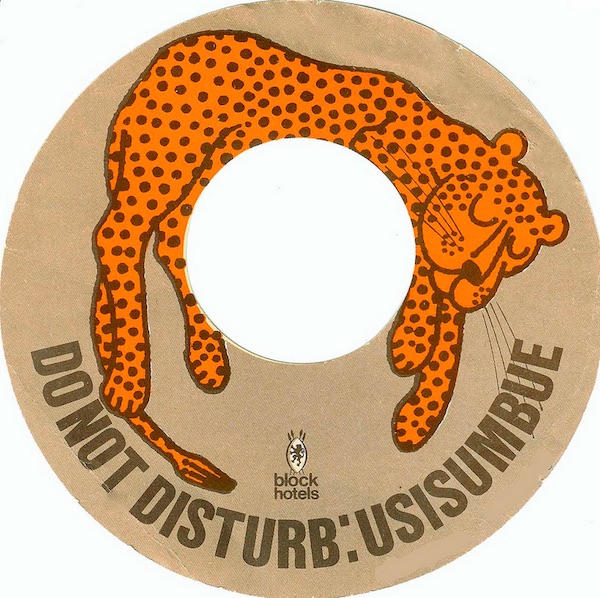
A retired training specialist with the International Labor Organization of the United Nations, Flores, who lives in Italy, had the good fortune to spend his 32-year career traveling to places like Bhutan, Iraq, Burma, Pakistan, and Fiji. However, it wasn’t until 1991, when he was nearly 50 years old, that he started keeping the Do Not Disturb signs he encountered on his stays.
“Do Not Disturb signs have been known for covering up crimes, or at least, delaying the discovery.”
“I think most collections start by chance,” Flores tells me over email. “I happened to travel quite a lot for work and stayed in many differenthotels. I picked up a first door hanger from a hotel in Islamabad, Pakistan, as a souvenir. Someone back at the office saw it and suggested it would make a nice collection, so I started picking up more on my other trips.
“Before that, I had started keeping spoons with airline logos/names from some of my flights, and although I have several hundred, it never took off as a collection,” he continues. “I also have hundreds of toilet seat bands from hotels. Some of them are quite interesting, but these, too, are not a formal collection. Finally, I more recently started collecting hotel key cards (the magnetic ones), and I already have several thousands.”
At this point, Flores is only one of a handful of serious Do Not Disturb collectors—including three adults in Germany, Switzerland, and Thailand, and a 13-year-old Canadian girl in Hong Kong—and he ranks himself No. 3 among them. They’ve all become friends and make a point to meet from time to time. The “Hotel ‘Do Not Disturb’ Sign Collectors” Facebook group currently has 107 members, but Flores says most of them are not serious collectors.
Even though he has traveled extensively, Flores hasn’t been to all of the countries he gathered DND signs from. “I have bought some on eBay, but not many,” he says. “I have often searched flea markets but found nothing. I receive many donations from friends, colleagues, and even complete strangers who travel for business or pleasure, but most of my signs come from exchanges with other collectors. I have also contacted hotels directly, but the response has not been encouraging.”
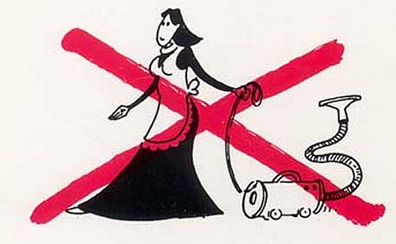
Hotel chains like Hilton, Sheraton, Radisson, and Holiday Inn often use variations of the same door hangers all over the world. While they do change their signs occasionally, Flores says the difference is often subtle. When he travels now, Flores tries to stay in a place he suspects will have something special, “but it’s always a gamble.”
However, he doesn’t necessarily have to check in to the ritziest joints to find amazing signs. “Strangely, many of the most expensive and exclusive hotels sometimes use very plain and unattractive signs,” Flores says. “On some occasions the price of the room correlates with how elaborate the sign is, mostly in Asian countries like Thailand, Indonesia, Laos, Cambodia, and Myanmar.”
And before Flores puts the Do Not Disturb sign in his bag, he considers how valuable it is. “Some of the more common paper ones are no loss to the hotels, so I just take them,” he says. “Other more elaborate or special ones like the wooden ones, I ask to buy them from the hotels. These are all individual, handcrafted pieces. Even though they’re usually found in countries where handicrafts are common and cheap, when hotels agree to sell these signs, they ask for quite a lot of money.”
Prior to Do Not Disturb signs, hotel staff just followed the clock, and maids knocked and walked in on people sleeping, showering, or engaging in other private bedroom activities. While they’ve done extensive research, Flores and his DND collector friends haven’t been able to nail down how or when the sign-hanging tradition began.
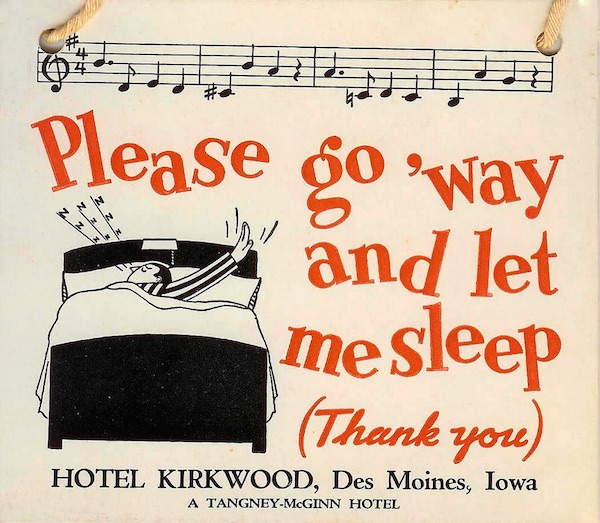
“The first widespread use was probably in the beginning of the 20th century, mostly in the U.S., in some of the more prestigious hotels where discretion was the better part of valor,” he says. “DND signs have also been known for covering up crimes, or at least, delaying the discovery.”
Do Not Disturb signs are most commonly made out of paper or card stock—they either hang on the door knob or insert into the electric lock. Some are die-cut into shapes like locks, keys, animals, or seashells. In places where the door opens to the outside, the Do Not Disturb sign may be a small sand bag that hangs on the door knob by a rope. While many DND signs have a “make-up room” message on the back, not all do. Signs that have “Do Not Disturb” messaging in multiple languages can have hilarious errors.
Paper signs can feature gorgeous designs or silly comics. In the United Kingdom and the United States, the focus seems to be on wordplay or witty text, using phrases like “My bed is so comfortable that I’m still in it,” “Beauty sleep in progress,” “Leave me alone,” “Taking a post-lobster buffet nap,” “Constructing a pillow fort,” or “Go away.” For example, a door hanger for Clarion Hotels, part of the Choice Hotels group in the U.S., gives a checklist of reasons “Why I Can’t Be Disturbed.” The list includes being tired from food, exercise, and business, but the option that’s already checked is “I’m trying to call myself on the two-line phone while surfing the Internet in my underwear.”
The boldest DND signs simply say, “Don’t” or “No.” More polite signs say things like “Privacy Please.” “Quite a number of hotels seem to pay a lot of attention to these humble accessories,” Flores says, “much to the collector’s delight.”

Since 1997, the Rufflets Country House Hotel in St. Andrews, Scotland, has been using a teddy bearnamed Rufus as a Do Not Disturb sign. If the maids are given the signal to clean the room, Rufus is placed among the guest’s things, like sitting at a laptop. The hotel considered getting rid of this tradition in 2008, but in an online poll, guests voted overwhelmingly in favor of keeping the bears.
In Asia and parts of Central America, Do Not Disturb signs can be individual works of art, and these are among Flores’ favorites. Wood is hand-carved into monkeys, elephants, deities, or shushing humans, and sometimes even hand-painted. Pillows may be hand-embroidered. Metal is forged into faces with eyelid flaps that latch down to indicate sleeping, while other signs are woven by hand. One painted wood block from Thailand shows a surprisingly intimate scene of a young woman sleeping, her bare breasts popping out of a sash tied around her torso.

“For me, the country of origin is important,” Flores says. “I have a very unique piece from the Vatican City from the Domus Sanctae Marthae, which is the hotel where the current Pope lives. I also love some very simple handmade pieces from Pacific Island states such as Kiribati. I’m desperately looking for pieces from non-tourist countries such as Somalia and North Korea.
“Quite a number of hotels seem to pay a lot of attention to these humble accessories—much to the collector’s delight.”
“I also collect DND signs from cruise ships, which I consider floating hotels, and the adhesive-label type found in airline amenity kits, mostly in business class—I consider these seats flying hotel rooms.”
Some Do Not Disturb signs serve a double-duty, advertising credit cards, rental cars, theater shows, restaurants, tourist attractions, or even perfume, like Chanel No. 5. A door hanger for a hotel in Kenya, for example, promotes Safari boots, which you’d obviously need if you planned to go stomping around with lions.
Aside from the hand-painted signs, Flores enjoys the cartoons on older signs from countries like the U.S., Italy, Spain, and Portugal. “A very nice piece I got recently from the InterContinental Westminster in London shows a caricature of the former Prime Minister Margaret Thatcher cleaning the room.”
If Margaret Thatcher were cleaning the room, I’d say that would be a sight worth the intrusion. But while she’s stacking fresh towels don’t forget to slip that Do Not Disturb hanger into your suitcase.
I love podcasts, and I thought they were fading away. It’s good to hear news like this from the Washington Post.
http://img.washingtonpost.com/rf/image_1484w/2010-2019/WashingtonPost/2014/09/12/Others/Images/2014-09-11/PODCASTS_Paskova_0031410482106.jpg?uuid=qN0OWjoUEeSgIx1h9_MaBQ
They were too clunky to download. The topics were sometimes a little too obscure. And they didn’t really make any money.
Podcasts, the short-form audio files that entered the mainstream with the original Apple iPod, have been around for more than a decade. But while Apple this year discontinued the classic version of its iconic device, the podcast is resurgent, drawing hard-core fans who want to listen to other people talk about, well, pretty much everything.
An average of 1.5 million listeners a month download “99% Invisible,” a program produced on a shoestring on the theme of design. Sports are such a popular topic that when ESPN suspended Bill Simmons for his podcast tirade against NFL Commissioner Roger Goodell, fans of his “B.S. Report” helped make #FreeSimmons a top trending term on Twitter. A new series from “This American Life” producer Alex Blumberg — about starting a podcast business — has quickly become one of the top 10 most-downloaded programs in the country.
And, importantly, podcasts are finally profitable.
“It’s sort of a renaissance. Podcasts are in vogue,” said Todd Cochrane, chief executive of RawVoice, a podcast data research firm.
Maybe it’s the intimacy of hearing soothing voices piped into your ears through a pair of headphones — or maybe it’s just how much time people need to kill listening to something. Americans spend more than three hours a day commuting, working out and doing household chores that can be accompanied by audio entertainment, according to census data studied by Matt Lieber, a former public radio producer who co-founded the podcast company with Blumberg.
Smartphones and Bluetooth-enabled cars have made it easier than ever for listeners — who are still mostly men — to load up their favorite programs. And instead of the old way of downloading them from iTunes onto a computer and syncing with an iPod, listeners can grab shows straight from the Internet onto their smartphones.
Last year, Apple said downloads of podcasts through iTunes reached 1 billion. RawVoice, which tracks 20,000 shows, said the number of unique monthly podcast listeners has tripled to 75 million from 25 million five years ago.
And the connection that people can feel toward their favorite podcasts is exactly the sort of relationship that many media companies are trying to build with their users. At a time when people can easily skip TV ads, messages from sponsors on podcasts have a way of sinking in, especially when they’re read by the hosts of the show themselves, analysts say. As a result, this second wave of podcasts — unlike the first go-round — is promising to make more money.
“Five years ago, podcasting was very much a hobbyist’s activity and many people weren’t making them to make money,” said Tom Webster, a vice president of strategy at polling firm Edison Research. “But audience sizes have grown consistently, and each listener is listening to more shows as part of their weekly habit. That’s brought major producers to embrace podcasting.”
When Roman Mars began his quirky public radio show on the topic of design, he never expected it to amount to much.
The show “99% Invisible” was small in every way. Each episode ran for just 4 minutes 30 seconds, short enough to wedge between segments of big shows like NPR’s “Morning Edition.” It was esoteric, with back stories on the way the periodic table and parking meters were designed. Mars had a tiny budget of $5,000 and wrote, narrated and produced the show from the bedroom of his Oakland, Calif., home.
The show was warmly received when it started airing four years ago on San Francisco’s KALW. But off the airwaves — in the world of podcasts — the show was a blockbuster. It is now consistently in the 20 most-downloaded podcasts on iTunes.
Mars quit his old public radio job and now works full time on “99% Invisible,” funded entirely by the show’s fans and a handful of sponsors. The show is still broadcast on a few public radio stations, but that “distribution means less and less over time,” Mars said in a recent phone interview from Dublin, where he was putting on a live show for European fans. “They have a great reach and I’m a huge fan of NPR, but right now, if I’m able to reach my audience directly through podcasts, the writing is on the wall.”
Despite some early enthusiasm, podcasts faded in popularity in the early 2000s, partly because of the many steps required to download them and play them in a vehicle. The introduction of the iPhone in 2007 changed that, making podcasts as convenient to access as a Netflix show. It’s easier to play them in cars, too, as automakers build wireless media functions into more and more models. And faster WiFi and mobile data speeds have made podcasts a snap to stream.
Radio is still far more popular and lucrative than the fledgling world of podcasts. The industry has withstood the disruption that the Internet wrought on newspapers and TV, partly thanks to an enormous audience of commuters trapped in cars. But podcast enthusiasts believe preferences are beginning to change.
“This is where radio syndication was 30 years ago, and this is just the beginning,” said industry veteran Norm Pattiz, chief executive of celebrity podcast channel PodcastOne. “What Netflix did for video is what podcasts are doing for radio today.”
Podcasters also like the personal connection they have with fans who listen through ear buds or headphones, which can make shows feel more intimate than other forms of media.
Mars said he keeps that in mind and mikes himself more closely than he used to. This allows him to use a quieter voice, which he calls a “head voice,” in the hopes of more closely connecting with listeners.
“My connection to the audience is something I completely cherish and is part of that medium that is really unique,” he said.
The flexibility of podcasts appeals to radio industry veterans whose shows have been dictated by rigid time blocks and long-held industry rules. Mars’s shows are now 20 minutes in length, allowing for deeper reporting and developed story lines. “Longform,” a podcast that interviews authors and magazine writers, runs much longer — too long to get picked up by any radio stations.
Even with the rise of six-
second Vine videos and viral listicles on the Web, Mars believes there is a strong appetite for long-form audio storytelling. It’s what keeps listeners committed for 20 minutes to stories about, for instance, Ikea hackers — people who mix and match Ikea furniture as a hobby.
Fans are so devoted that they have helped to raise nearly $600,000 in the past three years — money that has allowed Mars to hire three reporters and producers.
The money for podcasts is coming from not just fans but advertisers, too.
Pattiz at PodcastOne, a company that hosts and distributes podcasts, says his company sells millions of dollars of ads for popular podcasts by pro wrestler “Stone Cold” Steve Austin, talk host Adam Carolla and sportscaster Dan Patrick.
A new podcast launched in June starring Nicole “Snooki” Polizzi from the reality show “Jersey Shore” averages 1.5 million downloads per episode. Pattiz is scouting for more stars to launch podcasts. He has signed former CNN host Larry King and his wife, Shawn, and “Pawn Stars” host Rick Harrison.
The new podcast audiences inspired Blumberg, a former producer for NPR’s “Planet Money” program, to create a for-profit podcast company with narrative storytelling on a range of topics.
And he’s starting by reporting on himself and his new venture.
In the first three episodes of the series called “Startup,” Blumberg goes to Silicon Valley to meet with one of Twitter’s original investors, Chris Sacca, to pitch his idea. Blumberg invites listeners to eavesdrop on the investment conversations, where he initially falls flat explaining how the idea will become as successful as Twitter.
Blumberg and Lieber launched the show three weeks ago, and the first three episodes have jumped to the top five podcasts of the iTunes chart.
They are operating out of a shared office space in Brooklyn but have plans to build a production space.
“It was just so straightforward and totally not about begging to please buy this or that to keep the lights on,” Blumberg said. “It was pure excitement to realize if you have something people want, they are willing to buy it. That’s what these podcasts will generate.”
via Gizmodo
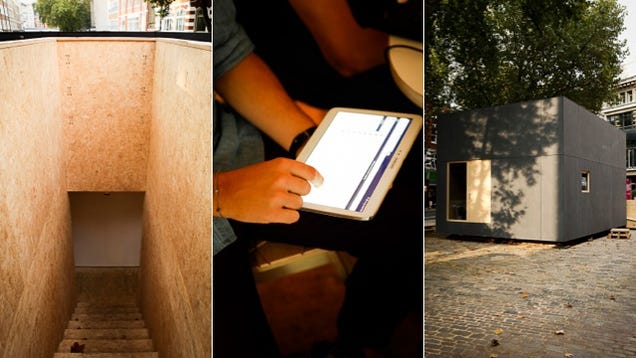
If you could go online, select a home, print the plans for free, and build it yourself for less than $80,000 in a few days, would you? That’s the dream behind WikiHouse, an open source home design project that just finished construction of its fourth prototype, a two-storey home that snaps together in just a few days.
Architects have struggled to find a viable model for building cheap, fast, single-family homes since the earliest experiments with pre-fab in the 1900s. It’s an idea we still grapple with today, and WikiHouse is its direct descendent: A project to publish open source building plans online for anyone to download, designed to require only the most basic knowledge of construction to create. The average cost of buying a home in America hovers around $300,000—WikiHouse 4.0 can be built from scratch for less than a third of that.
 EXPAND
EXPAND
“Since the industrial revolution the dominant idea from industry has been the assumption that if we want to produce homes they have to be provided by really large organizations who build them on our behalf,” said Alastair Parvin, the co-designer of WikiHouse, to The Independent. WikiHouse wants to cut out any and all middlemen, and the 4.0 house is its most advanced and realistic prototype to date.
So how do a bunch of unskilled n00bs put together a house that doesn’t fall apart when you open the front door? Think of it like putting together a model plane from a punch-out cardboard sheet. 350 panels of a product called SmartPly—essentially, a humidity-resistant particle board—are cut into numbered pieces using a CNC mill:
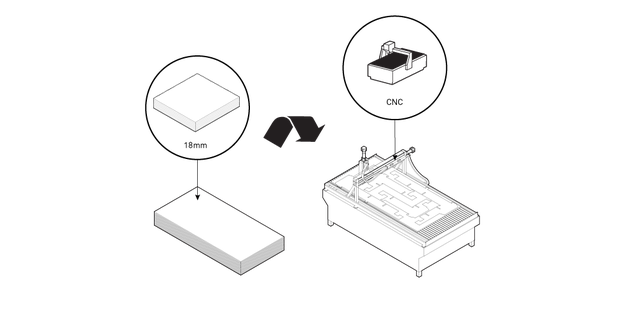 EXPAND
EXPAND

These pieces are then assembled using the number-specific map, requiring no bolts of any kind, a bit like lincoln logs. When pieced together, they form a sturdy skeleton for the rest of the house.

The rest of the home is made from super-efficient, inexpensive off-the-shelf parts. And inside, the structure is “smart” in the sense that you can control every bit of its wiring—from heat to lighting—with your phone. But it doesn’t use HomeKit or Nest or any proprietary connected home we’ve heard so much about. Rather, it uses a Linux computer and OpenHAB, an open source home automation software.
It’s not a “3D-printed house.” It’s actually way cooler than that, because it uses existing rapid prototyping tech that’s widely available for not much money. In that sense, it’s far, far more realistic than the multi-million dollar efforts to “print” whole buildings. In reality, 3D printing as we currently understand it doesn’t make much sense as a building technology.
Given the choice between a one-size-fits-all plastic bunker that costs millions to print and a cheap, light home you can cut out and put together for less than $100k, most of us will choose the latter.You can check out WikiHouse 4.0 at the Building Centre in London until September 26.
Image by Margaux Carron, courtesy of The Building Centre.
http://codex.wordpress.org/Giving_WordPress_Its_Own_Directory
The Walking Tour
The Speed of Inspiration
In need of a burst of creativity? Go for a walk.
And he had a lot of company in this belief, especially among the pantheon of the early big heads: Tchaikovsky, Rousseau, Dickens, Mahler, Thoreau, Kant — all were habitual walkers, some to the point of obsession. Thoreau, for instance, adhered to a simple calculus — he could write for an hour only if he offset that with an hour of walking. Tchaikovsky walked precisely two hours every day to remain creative. Rousseau believed he could conceive thoughts worthy of committing to paper only if he walked. Rousseau further claimed that just looking at a desk left him dissipated and vaguely nauseous, foreshadowing the affliction of modern cubicle dwellers everywhere.
Dickens may have been the most obsessive. He’d often suggest to guests “Let’s have a walk before dinner,” and then lead them off on a march of a dozen miles or more, returning with the host invigorated and guests on the point of debilitation and collapse. Along his route he’d let his imagination run wild, and would at times claim to see characters from his earlier books walking along the streets. “My walking is of two kinds,” Dickens wrote, “one straight on end to a definite goal at a round pace; one, objectless, loitering, and purely vagabond.” He boasted that “no gypsy on earth is a greater vagabond than myself.”
And it’s that vagabond state among walkers — moving aimlessly, not on a mission, drifting here and there, letting thoughts change with the passing view — that appears to best enliven fallow synapses, open the mind to new avenues, and fuel creativity. The prose for which Dickens was famed could only be “gained by walking dreamily in a place, it cannot be gained by walking observantly,” G.K. Chesterton noted of the author.
Recent science has been strengthening the links between walking and creativity.
A study published earlier this year in the Journal of Experimental Psychology by Stanford University professors Marily Oppezzo and Daniel L. Schwartz delved into the links between physical activity and cognitive abilities, specifically, the effect of walking on creativity.
This project encompassed a series of four experiments. Each involved 40 to 50 students, with those students tested on their creativity under varied circumstances. (How do you test creativity? By asking the students to verbally list things that they might do or construct with random objects, say, a button, or a tire. Scores were based on both the sheer volume of ideas, as well as on novelty, with extra points for coming up with unique ideas.)
In one test, a group was given the test while seated, and then again while walking on a treadmill. The treadmill group had more creative ideas. One might reasonably conclude that this showed that test-taking ability improved on the second round. So the procedure was reversed; still the scores were higher walking than when sitting. (What’s more, the authors note, “walking left a residue that produced strong performance when participants were subsequently sitting.”)
Another test pitted those walking outdoors against those sitting indoors. Walkers again did better. Could this have been the result of visual and auditory stimulus of being outside in a more interesting environment? To control for this, seated students were also tested on the same outdoor route, but while being rolled in a wheelchair. Walkers still did better. “While research indicates that being outdoors has many cognitive benefits,” the authors wrote, “walking has a very specific benefit — the improvement of creativity.”
The end result from all tests: “Four studies demonstrate that walking increases creative ideation. The effect is not simply due to the increased perceptual stimulation of moving through an environment, but rather it is due to walking.”
It’s rewarding, of course, when 18th and 19th century thinkers and 21st century social scientists arrive at the same conclusion by very different routes. But we’re a long, long way from the 19th century these days, and I’d argue that it’s even more essential for creative types to be out walking more often today. Not only because that gets the creative thoughts flowing, but because it serves as a moat that create a temporary lull against the ghastly information onslaught of our era, and provides a vantage point to see how better to variously dodge and link the dross that surrounds us.
It’s no secret: we’re ceaselessly bombarded by information from every direction, from sun-up to sleep. Noise has always been present in human lives, and we’ve always worked to discern a signal within it. But the volume of noise has grown to death metal levels in recent years. Just the past century we’ve gone from magazines to radio to television to social media, each piling on information both useful and not. And it’s not as if one medium has replaced the other — it simply builds atop one another, like a massive algal bloom. The information mongers have lately even violated the portcullis of our smartphone lock screens, and now nattering at us with emails and texts and Twitter updates, like a gossipy pocket troll.
One recent study found that the amount of information we receive daily has increased fivefold in the last three decades, but that strikes me as conservative. In any event, we’re processing information constantly in a way that 19th centurions couldn’t fathom. Many of us like to think of ourselves as able to sift and sort on the fly, like human colanders. But it’s not that easy. All that information, ceaselessly deployed, create frustrating blockages in our minds and limits the flexibility that allows creativity.
To be creative, to restore flow, we need at a minimum more downtime, a shelter away from ceaselessly incoming rounds of dirt and dope and scoop and poop. And this is not just a Cape Cod for the mind, a time to relax before wading back into the sifting and processing. Daydreaming, it turns out, is part and parcel of how the mind works, of how it locates and makes sense of the data we’ve already accreted and the links between them.
“You might be going for a walk or grocery shopping or doing something that doesn’t require sustained attention and suddenly — boom — the answer to a problem that had been vexing you suddenly appears,” wrote Daniel J. Levitin, author of The Organized Mind: Thinking Straight in the Age of Information Overload, in a recent New York Timesarticle.
Walking with a touch of agreeable languor is an underappreciated gift — it endows us with the time to disentangle that logjam in our head and let the flow start to move again, then to build unexpected bridges between notions and ideas. A walk among trees and meadows is always welcome — merely being amid nature is a proven salve for mind and body. But even walking in a densely urban environment where you’re still under siege from Lilliputian mercenaries in the information army — armed with messages in store windows, ads plastered on passing buses, dudes dressed like fruits trying to entice you into a smoothie shop — you can still feel at a remove from The Information, as if viewing it from the far side of a wide moat. Walking creates a mobile oasis as it primes the well of creativity. It’s more essential to visit now that even in Wordsworth’s days of endless rambling.
I’ve got no truck against the information age. In fact, new tools make it easier than ever to compose on the fly — I use my iPhone in voice memo mode, and walk along the street dictating ideas and descriptions and sometimes whole paragraphs and once in a while the outline of a complete story. People I pass pay no attention, assuming I’m just another asshole on a cellphone.
I get plenty done on a walk — including much of this column, as it happens. I walk through woods and town, and then return home and head upstairs to my office, where I catch sight of my desk.
Long ago, it felt like my friend. But now tends to feel more like an ingot of dull iron, a dispiriting anchor of the soul. Indeed, the sight of it sometimes makes me a little nauseous. • 21 August 2014
Crispy and flavourful these simple chicken thighs will be a weeknight staple.
Ingredients
Instructions